





Aleval
Application instruction:
Aleval – drug with antidepressive action.
Form of release and structure
Aleval release in the form of tablets, film coated, round, biconvex, blue color, on one party of risk; on a break – white color a kernel (on 14 pieces in strips, 1 or 2 strips in a cardboard pack).
Structure of 1 tablet:
- Active agent: sertraline – 25, 50 or 100 mg (a sertraline hydrochloride – 28, 56 or 112 mg);
- Auxiliary components: a gipromelloza 2910, a calcium hydrophosphate dihydrate, indigo carmine, microcrystallic cellulose, corn starch, кросповидон, the purified talc, magnesium stearate, anhydrous colloid silicon dioxide;
- Film cover: a macrogoal 6000, indigo carmine, a gipromelloz 2910, the purified talc, titanium dioxide.
Indications to use
- Depressions of various etiology (for treatment and prevention);
- The panic frustration proceeding with/without agoraphobia;
- Posttraumatic stressful frustration (PTSR);
- Obsessivno-kompulsivnye Frustration (OKF).
Contraindications
Absolute:
- Uncontrollable epilepsy;
- The combined use with monoamine oxidase inhibitors and Pimozidum (when replacing drugs it is necessary to observe a break of 14 days);
- The combined use with fenfluraminy or tryptophane;
- Age up to 6 years (at treatment of a depression and ROC) or up to 18 years (at treatment of PTSR and panic frustration);
- Pregnancy and period of a lactation;
- Hypersensitivity to drug components.
Relative (Aleval it is necessary to appoint with care in the presence of the following diseases / states):
- Organic diseases of a brain (including a delay of intellectual development);
- Maniacal states;
- Epilepsy;
- Liver and/or renal failure;
- Decrease in body weight;
- Age up to 18 years (at treatment of ROC and a depression).
Women of reproductive age during Aleval's use need to use effective methods of contraception.
Route of administration and dosage
Pill Aleval is taken inside, in morning or evening, irrespective of meal. Frequency rate of reception – once a day.
Initial adult dose at treatment of a depression and ROC – 50 mg. With an interval not more often than once a week, the dose can be increased gradually to maximum – 200 mg.
The initial effect can be expected within 7 days, full – in 2-4 weeks from the moment of the beginning of therapy (at ROC action can develop later). The maintenance dose at a long course has to be the smallest effective. It is adjusted depending on therapeutic effect.
The recommended dosing mode at treatment of ROC at children:
- 6-12 years: an initial daily dose – 25 mg, in a week its increase up to 50 mg is possible;
- 12-17 years: an initial daily dose – 50 mg. Gradually, not earlier, than in a week, its increase to maximum – 200 mg is possible. In order to avoid overdose it is necessary to consider smaller body weight at children in comparison with adults (at increase in a daily dose careful monitoring of a condition of this category of patients is carried out, in case of development of symptoms of overdose drug is cancelled).
Initial adult dose at treatment of panic frustration and PTSR – 25 mg. It is possible its gradual (not more often than once a week) increase by 25 mg to maximum – 200 mg (taking into account portability and therapeutic effect).
The initial effect can be expected within 7 days, full – in 2-4 weeks from the moment of the beginning of therapy. The maintenance dose at a long course has to be the smallest effective.
At functional disturbances of kidneys, and also correction of the mode of dosing is not required to patients of advanced age.
Patients with heavy abnormal liver functions need to lower Aleval's dose or to increase breaks between receptions.
Side effects
- Cardiovascular system: tachycardia, tachycardia, lowering of arterial pressure;
- Alimentary system: dryness in a mouth, a loss of appetite up to anorexia, dispepsichesky symptoms (in the form of a meteorism, nausea, vomiting, diarrhea), pancreatitis, an abdominal pain, hepatitis, a liver failure, jaundice; seldom – increase in appetite;
- Skeletal and muscular system: muscular spasms, arthralgia;
- Urinary system: enuresis, delay or incontience of urine;
- Central and peripheral nervous system: extrapyramidal frustration (in the form of diskineziya, akathisias, a bruxism, gait disturbance), paresthesias, involuntary muscular contractions, drowsiness, a faint, migraine, a headache, dizziness, euphoria, a tremor, alarm, sleeplessness, agitation, spasms, maniacal frustration, hallucinations, decrease a libido, nightmares, psychosis, a suicide, a coma;
- Endocrine system: hypothyroidism, giperprolaktinemiya, syndrome of inadequate secretion of antidiuretic hormone;
- Respiratory system: yawning, bronchospasm;
- Reproductive system: a priapism, disturbance of sexual function (in the form of a delay of an ejaculation, decrease in a potentiality), a gynecomastia, disturbance of a menstrual cycle, a galactorrhoea;
- Sense bodys: a ring in ears, a vision disorder, periorbital hypostasis, a mydriasis;
- Laboratory researches: seldom (at a long course) – asymptomatic reversible increase in activity of transaminases in blood serum. Drug withdrawal in this case leads to normalization of activity of enzymes, a leukopenia, thrombocytopenia, increase in concentration of cholesterol in blood serum;
- Allergic reactions: anaphylactoid reaction, small tortoiseshell, face edema, itch, Quincke's disease;
- Dermatological reactions: a purpura, an alopecia, rushes of blood to the person or erubescence, a photosensitization, the increased sweating; seldom – a toxic epidermal necrolysis, Stephens-Johnson's syndrome;
- Others: weakness, increase or decrease in body weight, bleeding (including gastrointestinal, nasal or a hamaturia), peripheral hypostasis.
Owing to the termination of reception of Aleval the withdrawal which signs are hypesthesias, paresthesias, psychomotor excitement, depression symptoms, aggressive reactions, hallucinations, concern or symptoms of psychosis in rare instances develops (it is impossible to distinguish from symptoms of the main disease).
Special instructions
The combined use of Aleval with monoamine oxidase inhibitors is not recommended (it is necessary to observe a break not less than 14 days).
It is necessary to be careful at the combined use with other drugs which strengthen serotonergic neurotransmission (for example, with tryptophane, fenfluraminy or agonists of serotoninovy 5-NT-retseptorov). Whenever possible, such combination is recommended to be avoided as in this case the risk of development of a serotoninovy syndrome and malignant antipsychotic syndrome increases. Can be symptoms of a serotoninovy syndrome autonomous instability (fluctuations of arterial pressure, tachycardia, a hyperthermia), changes of the mental status (hallucinations, agitation, a coma), neuromuscular transmission changes (a lack of coordination of movements, a hyperreflexia) and/or disturbances from digestive tract (diarrhea, vomiting, nausea). Some symptoms (muscle tension, a hyperthermia, changes of the mental status, autonomous instability with a possibility of bystry fluctuations of parameters of the vital functions) can remind the symptomatology arising owing to a malignant antipsychotic syndrome.
Upon transition from other antidepressants and drugs used for therapy of obsessivno-compulsive frustration (in particular with it is long the operating drugs, for example, from fluoxetine), to sertraline it is necessary to be careful that is connected with limited clinical experience. The necessary interval for implementation of such transition is not established.
At the patients who are exposed to electroconvulsive therapy sufficient experience of use of Aleval is absent. The possible risk or success of such combination therapy is not studied. Also there is no experience of use of drug at a convulsive syndrome in this connection it is recommended to avoid purpose of therapy at patients with unstable epilepsy, and in case of controlled epilepsy it is necessary to exercise careful control of a state. Emergence of spasms demands treatment cancellation.
At some patients treatment by Aleval provoked development of maniacal frustration. Cases of activation of maniacal frustration at maniac-depressive psychosis owing to receiving other antidepressants or means applied to therapy of obsessivno-compulsive frustration are also described.
At liver diseases Aleval it is necessary to apply with care, decrease in a single dose or increase in time between administration of drug can be required. It is also necessary to be careful appointing therapy by the patient with hemorrhagic diseases in the anamnesis and in combination with the medicines having the established ability to change of functions of thrombocytes.
During therapy by Aleval the tranzitorny hyponatremia, most often in case of the combined use with diuretics or some other drugs, and also at elderly patients can develop. Emergence of a symptomatic hyponatremia demands drug withdrawal and purpose of adequate therapy which is directed to correction of concentration of sodium in blood. The headache, disturbances of concentration of attention and memory, instability and weakness belongs to symptoms of a hyponatremia that can lead to falling. In heavier current development of hallucinations, a faint, spasms, a coma, apnoea and a lethal outcome can be observed.
Risk group concerning suicide attempts are patients with a depression. This danger remains before remission development in this connection, from the moment of the beginning of therapy and before achievement of optimum clinical effect, behind a condition of patients it is necessary to establish constant medical control.
At children up to 24 years at a depression and other mental disturbances antidepressants increase probability of development of suicide behavior and suicide thoughts. Before Aleval's appointment this age group of patients needs to correlate advantage to possible risk. It is also necessary to consider that any depressive frustration in itself increases risk of a suicide. Therefore during therapy it is necessary to establish by antidepressants for early identification of changes or behavior disorders, and also suicide bents for all patients observation.
To manage vehicles, the special equipment, and also to perform the works connected with the increased risk during therapy it is not recommended.
Medicinal interaction
In "the washing period" when replacing one inhibitor of neyronalny serotonin reuptake by another there is no need, however change of course of therapy demands care.
At the combined use of Aleval with some medicinal means / substances the following effects can be observed:
- Pimozidum (at single appointment in a low dose (2 mg)): the increase in its concentration which is not connected with any changes in an ECG (the combination is contraindicated);
- Tryptophane, фенфлурамин: interaction development (the combination is not recommended);
- Monoamine oxidase inhibitors (including селегилин, моклобемид, линезолид): development of a serotoninovy syndrome (in the form of a hyperthermia, rigidity, a myoclonus, lability of the autonomic nervous system (bystry fluctuations of parameters of cardiovascular and respiratory systems), changes of the mental status, including the expressed excitement, an acrimony, confusion of consciousness which in some cases can pass into a delirious state or a coma);
- The drugs exerting the oppressing impact on the central nervous system: interaction development; alcohol intake is forbidden; on psychomotor and cognitive function at healthy people potentiation of effect of carbamazepine, a haloperidol or Phenytoinum, and also ethanol was not noted (at the combined use careful control is required);
- Anticoagulants of indirect action (warfarin): insignificant, but statistically reliable increase in a prothrombin time (at purpose of a combination in an initiation of treatment and after its termination it is recommended to control a prothrombin time);
- Phenazone (in a dose of 200 mg): reliable reduction of its elimination half-life (in some cases);
- Phenytoinum: change of its plasma concentration (clinically significant interaction does not develop, metabolism is not suppressed; it is recommended to control carefully its plasma concentration at the beginning of the combined use and, if necessary, to adjust a dose);
- Sumatriptan: development of confusion of consciousness, excitement, alarm, weakness, increase in tendon jerks (in extremely exceptional cases);
- The drugs contacting proteins of plasma (for example, diazepam, Tolbutamidum): probability of development of interaction;
- Cimetidinum: considerable decrease in clearance of sertraline;
- Medicines in which metabolism CYP2D6 isoenzyme (antiarrhytmic medicines I C of a class, tricyclic antidepressants takes part; at long therapy by sertraline in a daily dose of 50 mg): increase in their plasma concentration;
- Tolbutamidum: decrease in its clearance (it is necessary to control glucose level in blood);
- The medicines influencing serotonergic transfer (for example, lithium): development of a tremor (the combination demands care).
Terms and storage conditions
To store in protected from light, the place, dry, unavailable to children, at a temperature up to 25 °C.
Period of validity – 3 years.
If your liver ceased to work, death would come within a day.
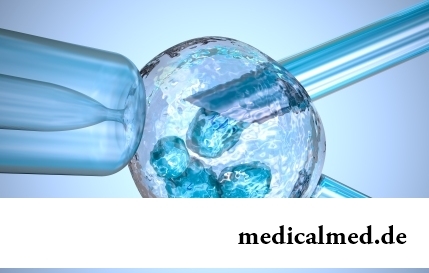
EKO, or extracorporal fertilization - a method of treatment of infertility which became the reason of a set broken mines in due time...
Section: Articles about health
The popular expression "run from a heart attack" became the motto of the people supporting active lifestyle. Moreover, run became a peculiar fashionable tendency: sales of racetracks and the accompanying goods for run are at permanently high level. Really...
Section: Articles about health
Bathing in broths of medical flowers and plants (phytobathtub) was eurysynusic since Cleopatra who is a good judge in all that concerns beauty and health. And today phytobathtubs is the simple and available means allowing not only to remove nervous tension, but also to recover from many diseases. Grass bathtubs at treatment of cold, osteochondrosis, radiculitis, skin diseases, and also diseases of urinary tract and vessels are especially effective....
Section: Articles about health
For anybody not a secret that the modern person eats not as his ancestors. For the last 100 years in broad access appeared with...
Section: Articles about health
The technique of acupuncture (acupuncture) is used in the medical purposes more than three and a half millennia. It is eurysynusic and recognized as official medicine in the majority of the developed countries of the world. Influence by fine needles on so-called points...
Section: Articles about health
Statistically, at the address to doctors seven of each ten patients complain of a headache. Actually it is much more people who are periodically feeling unpleasant feelings such. Many people, apart from a headache the reason for serious fears, prefer to muffle independently the next attack medicines. Such behavior is extremely careless, especially if this symptom appears regularly and is followed by other signs of an indisposition. Constants head Bol...
Section: Articles about health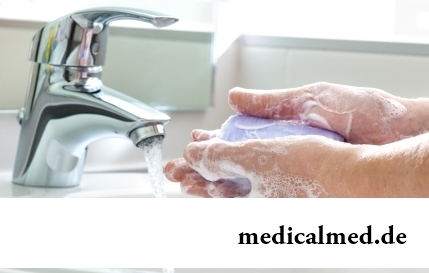
Helminthosis is one of the most widespread diseases. Statistically, with any species of helminths it is infected porridges...
Section: Articles about health
According to World Health Organization, every third inhabitant of Earth has excess weight, and every tenth has obesity. The reason of this phenomenon, according to specialists, roots in one not very comforting fact: most of people consume much...
Section: Articles about health
What will only not be thought up by persons interested to have a beautiful figure. Here the last innovation – for weight loss needs to be eaten greasy food. Let's understand whether there is at a fatty diet common sense....
Section: Slideshow
What they, women? Beautiful, gentle, passionate and at the same time windy, gusty, and nervous. And what is stranger: all эт...
Section: Articles about health
Separate food - the system of meal based on digestion physiology which is carried to improvement methods. According to nutritionists, the separate use of the carbohydrate and proteinaceous products demanding different conditions of assimilation helps to get rid from Bol...
Section: Articles about health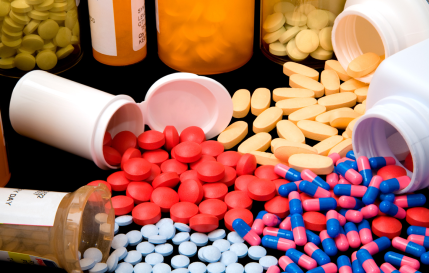
Long time antibiotics were considered as a panacea from all diseases and were appointed even at insignificant symptoms of an infection. Even now not everyone knows in what force of antibiotics how and when they should be accepted. Let's discredit 7 popular myths about such drugs....
Section: Articles about health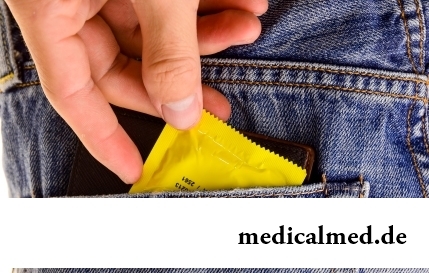
Today about 30 diseases, sexually transmitted are known. To wide circulation of these illnesses extremely with...
Section: Articles about health
Household skills which to us so diligently imparted in the childhood it appears, not always bring only benefit. According to results of the last researches, some habits which for a long time were considered useful and even necessary can become...
Section: Articles about health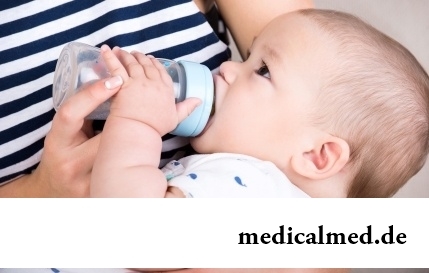
Producers of milk mixes for children assure: mixes are ideally balanced and adapted for needs of babies. If mother should raise artificially the kid owing to serious problems with health, to do nothing – it is necessary to feed with substitutes of milk. However pediatricians note that not seldom women without good reasons refuse feeding of the child a breast and pass to milk mixes. Common causes of such decision – the aspiration to leave quicker...
Section: Articles about health
The nature does not stand stagnation and monotony. It is known that tissues of a human body atrophy if do not receive necessary loadings...
Section: Articles about health
Women quite often suffer from complexes concerning the sizes of the bust. Strangely enough, not too modest, and excessively curvy shapes become the reason of sincere discomfort sometimes. Except psychological problems, a big bust sometimes with...
Section: Articles about health
Such trouble as the milkwoman's attack, at least once in life happened almost to each woman. Prevalence of a disease is explained by the fact that the causative agent of an illness belongs to the so-called opportunistic microflora living on mucous membranes of any human body and which is becoming more active only under favorable conditions. If you had curdled allocations from a vagina, the itch and burning in external genitals, or painful feelings disturb at sex...
Section: Articles about health
The trophic ulcer is not an independent disease. This heavy complication arising owing to a thermal injury (a burn...
Section: Articles about health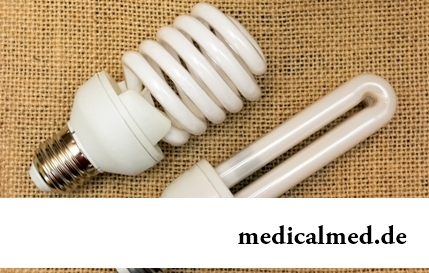
Energy saving lamps are one of the most popular products of innovative technologies, and there is no wonder: they much more economic also are more long-lasting than usual filament lamps. At the same time there are fears that energy saving bulbs can become the reasons...
Section: Articles about health
Any of us is not insured from a heavy illness of the loved one. Happens and so that someone from family members becomes the bed patient, and remains in such state for a long time. It extremely suppresses both the most injured, and all its house which life considerably changes....
Section: Articles about health
Ability of an organism to resist to adverse environmental factors (to impact of temperature drops, humidity and pressure...
Section: Articles about health
Use of medicinal plants in therapy is urgent today, more than ever. The drugs made of curative herbs cannot replace completely modern synthetic drugs, but their use becomes frequent serious help in simplification a leak...
Section: Articles about health
You heard that laughter prolongs life? Researchers did not manage to establish longevity direct link with sincere fun yet, but several facts confirming beneficial influence of risibility on the state of health are clinically proved....
Section: Articles about health
Beauty shop – the place which is associated only with positive emotions: joy, pleasure, relaxation. One...
Section: Articles about health
From sexual contacts each person can test insufficiently strongly expressed sexual desire or lack of satisfaction from time to time. However when it happens regularly, it is an occasion to think about health. Most of people does not hurry an obrashcha...
Section: Articles about health
Several decades ago the basil (the district khan, реан, Reagan) was considered as a part of the Caucasian or east cuisine, but today it strongly took the place on tables of Russians. Greens of this plant possess a strong, pleasant smell and specific fresh taste because of which it is included almost in all dry mixes of spicy herbs, and also give to meat and fresh fish dishes....
Section: Articles about health
